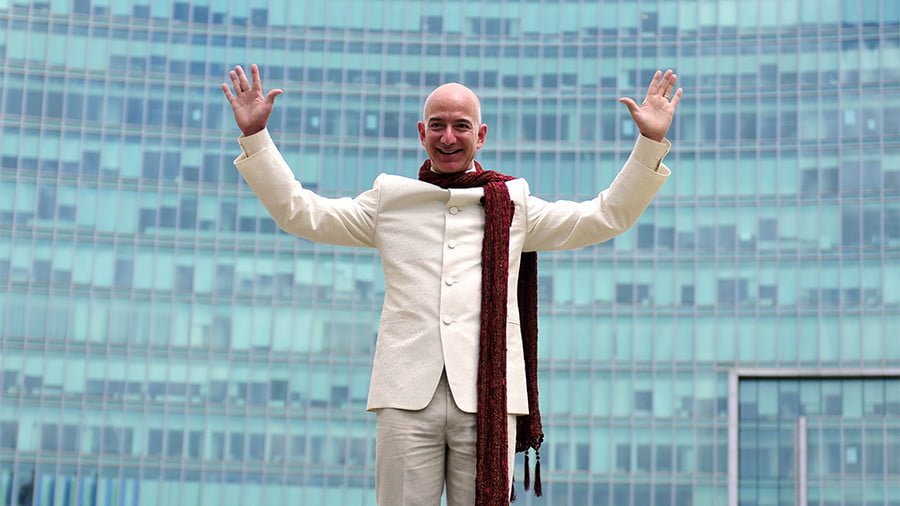The 10 Companies that Control Almost Every Single Food and Beverage Brand
Only 10 companies control almost every large food and beverage brand in the world.
In 2013, Oxfam International created a , which focused on 10 of the world’s biggest and most influential food and beverage companies. These mega-corporations are so powerful that their policies can have a major impact on the diets and working conditions of people worldwide.
In an effort to push these companies to make positive changes—and for customers to realize who controls the brands they are buying—Oxfam created a mind-boggling infographic that shows how interconnected consumer brands really are.
Based on the report, these 10 companies, known as the “Big Ten,” are Nestlé, PepsiCo, Coca-Cola, Unilever, Danone, General Mills, Kellogg’s, Mars, Associated British Foods and Mondelez. Each of these companies employs thousands and make billions of dollars in revenue every year, while virtually controlling the world’s food supply.
The Oxfam scorecard assesses the agricultural sourcing policies of the world’s 10 largest food and beverage companies and exclusively focused on publicly available information that relates to the policies of these companies on their sourcing of agricultural commodities from developing countries.
The selection of these companies was based on those with the largest overall revenues globally, as well as their position in the Forbes 2000 annual ranking, which measures companies on the basis of composite sales, assets, profits and market value.
The agriculture and food production industry employed more than one billion people as of last year, or a third of the global workforce. While the industry is substantial, a relatively small number of companies wield an enormous amount of influence.
“If you look at the massive global food system, it’s hard to get your head around. Just a handful of companies can dictate food choices, supplier terms and consumer variety,” Chris Jochnick, director of the private sector department at Oxfam America,.
“In Pakistan, rural communities say Nestlé is bottling and selling valuable groundwater near villages that can’t afford clean water. In 2009, Kraft was accused of purchasing beef from Brazilian suppliers linked to cutting down trees in the Amazon rainforest in order to graze cattle. And today, Coca-Cola is facing allegations of child labor in its supply chain in the Philippines,” the notes.
“Sadly, these charges are not anomalies. For more than 100 years, the world’s most powerful food and beverage companies have relied on cheap land and labor to produce inexpensive products and huge profits. But these profits have often come at the cost of the environment and local communities around the world, and have contributed to a food system in crisis.”
These 10 companies are among the largest in the world by a number of measures and essentially operate as an oligopoly. Every one of the “Big 10” had revenues in the tens of billions of dollars in Fiscal Year 2013—with five of these companies having at least $50 billion in assets, while four had more than $6 billion in profits last year.
Many of these companies are household names, as they often spend massive amounts on advertising in an effort to promote their brands. Out of these companies, nine of the ten were among the 100 largest purchasers of media advertising in the world in 2012. Coca-Cola, the world’s sixth largest advertiser, spent more than $3 billion in 2012 on advertising. Unilever’s media expenditure, at $7.4 billion, was the second-highest worldwide.
Essentially, these companies work to propagandize the public into a sense of familiarity through advertising, in an effort to keep people buying their “food-like” products. Across western society, and specifically in the United States, most of what we buy is what environmental and food advocate Michael Pollan deems
“If it has more than five ingredients, it’s probably not food. Or if it has ingredients that your third grader can’t pronounce, it’s probably not food,” Pollan says.
Typically, “food-like” items come from a guy in a white lab coat, rather than from nature, and these products are not good for your body, or your health. It is important to remember that the “Big 10” specialize in edible “food-like” products that come from a lab and you should do your best to steer clear of them.
While “food-like” products may not be extremely harmful when used infrequently, it is important to remember that these products often contain unhealthy trans fats, high levels of sodium, hydrogenated oils and refined sugar, especially high fructose corn syrup. All of these things have been linked to one or more chronic diseases. In addition, many processed foods are much lower in vitamins and minerals but much higher in calories than whole foods.
Please share this enlightening infographic to help others become aware of which companies are selling the vast majority of unhealthy “food-like” substances that are detrimental to the human health!
By Jay Syrmopoulos
Source: Natural Blaze








